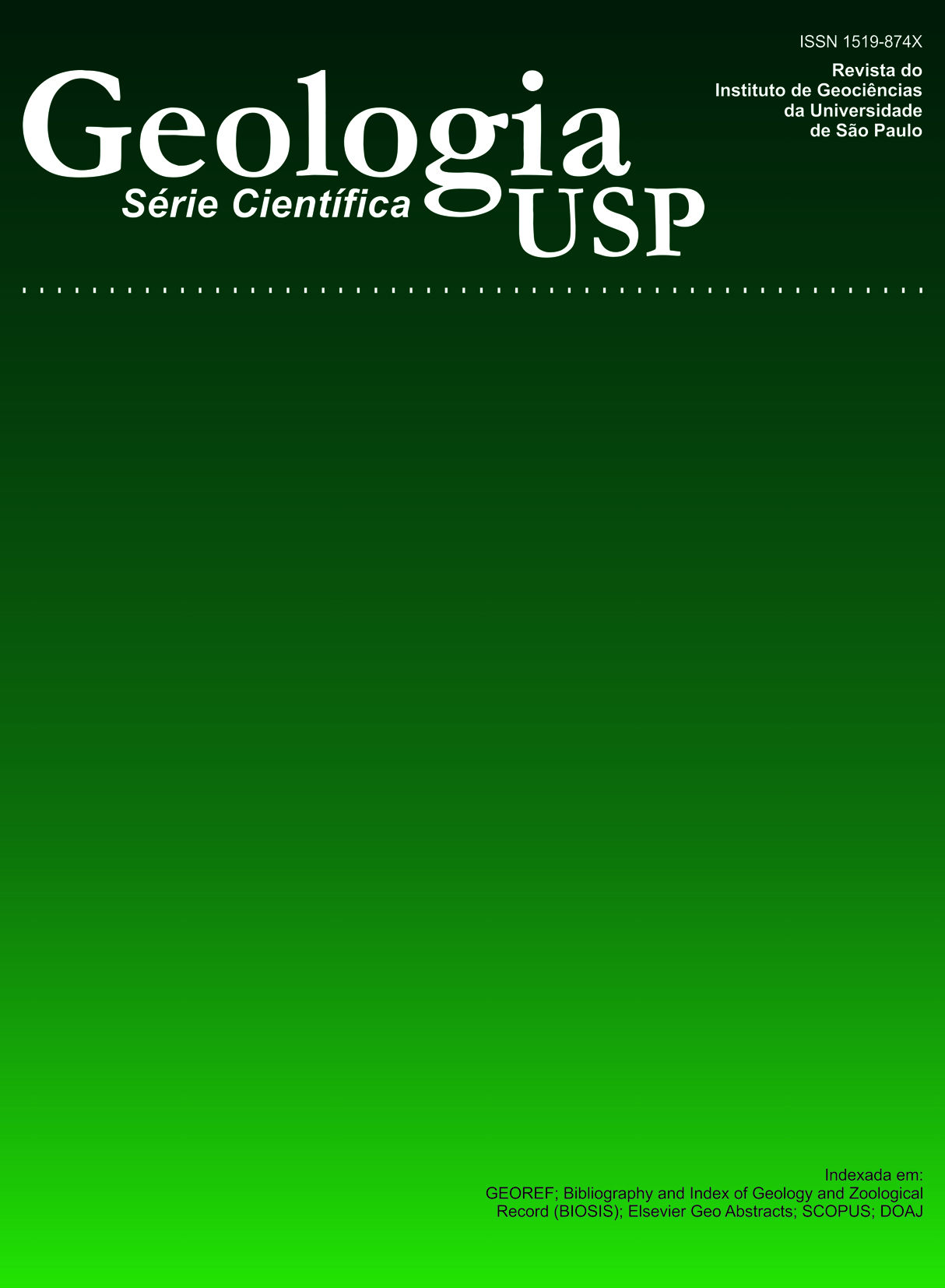Turmalinitos vulcanogênicos da formação Morro da Pedra Preta do Grupo Serra do Itaberaba (SP): petrografia, composição química da turmalina e implicações metalogenéticas
DOI:
https://doi.org/10.5327/S1519-874X2005000100001Palavras-chave:
Grupo Serra do Itaberaba, Formação Morro da Pedra Preta, turmalinitos, atividade vulcano-exalativa de fundo oceânicoResumo
Turmalinitos associados a anfibolitos, metachert, formação ferrífera, metatufos, rochas metassedimentares, metavulcanoclásticas e calciossilicáticas são encontrados na Formação Morro da Pedra Preta, seqüência metavulcano-sedimentar basal do Grupo Serra do Itaberaba (SP - Brasil). A deformação da rocha, que é formada por leitos ricos em turmalina alternados com leitos ricos em quartzo, a presença de clastos do tipo rip-up e a química de rocha total semelhante à das rochas metassedimentares comprovam a origem sin-sedimentar dos turmalinitos. Análises químicas da turmalina por microssonda eletrônica mostram que, para a turmalina dos turmalinitos associados a metatufos, formação ferrífera, metachert e rochas metavulcanoclásticas e metassedimentares, as composições são intermediárias à série schorlita-dravita, enquanto para os turmalinitos associados a anfibolitos, metatufos e a rochas calciossilicáticas, as composições são intermediárias à série dravitauvita. As primeiras apresentam conteúdos baixos de Ca e elevados de Al e Na, com variações nos teores de Fe e Mg (série schorlita-dravita), e as últimas são caracterizadas por teores baixos de Na e Al e altos de Mg e Ca, contendo adicionalmente flúor. A componente schorlita da turmalina dos turmalinitos situados em porções proximais aos centros de atividade vulcano-exalativa de fundo oceânico é indicativa do potencial para ouro da Formação Morro da Pedra, o que contrasta com as condições requeridas para a formação de depósitos de sulfetos maciços (fluidos hipersalinos e associação com turmalinitos magnesianos). A turmalina dos vários turmalinitos da Formação Morro da Pedra Preta não é tipicamente magnesiana e sua composição foi mais fortemente influenciada pela composição das rochas circundantes do que por aquela dos fluidos hidrotermais, especialmente no caso em que o turmalinito se depositou em uma posição intermediária a distal em relação ao centro de atividade vulcano-exalativa.Downloads
Os dados de download ainda não estão disponíveis.
Downloads
Publicado
2005-06-01
Edição
Seção
Artigos
Licença
Autores que publicam nesta revista concordam com os seguintes termos:
- Autores mantém os direitos autorais e concedem à revista Geologia USP. Série Científica, o direito de primeira publicação, com o trabalho sob a licença Creative Commons BY-NC-SA (resumo da Licença: https://creativecommons.org/licenses/by-nc-sa/4.0 | texto completo da licença: https://creativecommons.org/licenses/by-nc-sa/4.0/legalcode) que permite o compartilhamento do trabalho de forma não comercial e conferindo os devidos créditos autorais da primeira publicação nesta revista.
- Autores têm autorização para assumir contratos adicionais separadamente, para distribuição não-exclusiva da versão do trabalho publicada nesta revista (publicar em repositório institucional ou como capítulo de livro), conferindo os devidos créditos autorais da primeira publicação nesta revista.
- Autores têm permissão e são estimulados a publicar e distribuir seu trabalho online (em repositórios institucionais ou na sua página pessoal) a qualquer ponto antes ou durante o processo editorial, uma vez que isso pode gerar alterações produtivas, bem como aumentar o impacto e a citação do trabalho publicado (Veja O efeito do Acesso Aberto e downloads no impacto das citações).
Como Citar
Beljavskis, P., Garda, G. M., Mansueto, M. de S., & Silva, D. (2005). Turmalinitos vulcanogênicos da formação Morro da Pedra Preta do Grupo Serra do Itaberaba (SP): petrografia, composição química da turmalina e implicações metalogenéticas . Geologia USP. Série Científica, 5(1), 1-18. https://doi.org/10.5327/S1519-874X2005000100001















